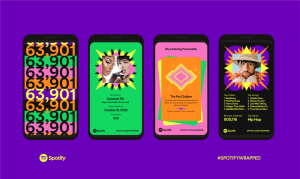Customers expect smooth, personalised, and easy-to-use experiences from the brands they trust. With technology moving quickly, businesses need to keep up — and that’s where mobile and IoT (Internet of Things) come in. Together, they’re changing how brands interact with people, making every moment more connected and meaningful.
Why mobile matters
Mobile has completely changed how we live and interact. A well-designed app can:
- Make life easier — Customers can engage with brands anytime, anywhere.
- Feel personal — Brands can use data to offer tailored content and services.
- Save time — Mobile payments, bookings, and instant support make things faster and simpler.
For example, in hospitality, mobile apps let guests unlock their rooms without a key, get custom offers, and reach support right away — turning a regular stay into something special.
How IoT brings it all together
IoT connects everyday devices to the digital world, helping businesses:
- Understand needs — Smart devices learn customer habits and make proactive suggestions.
- Automate tasks — Routine jobs get done automatically, saving time and effort.
- Create fun experiences — From smart displays in stores to connected fitness equipment, IoT makes interactions more engaging.
Retailers use IoT to track how customers move through stores and adjust displays in real time. Healthcare providers use wearables to monitor patients and step in when needed.
Available frameworks for IoT integration
If you’re thinking about implementing IoT solutions, there are several widely-used frameworks that can support integration and scalability:
- AWS IoT Core – Ideal for connecting large fleets of devices securely and reliably.
- Microsoft Azure IoT Hub – Good for enterprise-level solutions with robust cloud integration.
- Google Cloud IoT – Supports real-time analytics and machine learning for smarter decision-making.
- IBM Watson IoT – Offers strong AI integration for predictive insights.
- ThingSpeak (by MathWorks) – Useful for academic or prototype-level projects, with simple cloud integration.
These platforms make it easier to manage, analyse, and act on the data coming from connected devices.
Example use-cases
Here are a few real-world examples of how mobile and IoT can work together to improve customer experience:
- Retail – Smart shelves that alert staff when items are running low, combined with mobile apps that offer real-time promotions based on shopping habits.
- Hospitality – Hotel rooms that adjust lighting and temperature based on guest preferences, and mobile check-in that skips the front desk entirely.
- Healthcare – Wearables that monitor vital signs and send alerts via mobile apps to both patients and healthcare providers.
- Transportation – Connected cars that send diagnostics to the user’s phone and suggest the nearest service station before issues arise.
- Fitness & Wellness – Smart gym equipment paired with mobile apps that track performance and provide personalised workout plans.
The magic of combining mobile and IoT
When mobile and IoT work together, they create seamless experiences. Think of a fitness tracker that syncs with an app to show progress and give motivation. Or a car app that tells you when it needs servicing before there’s a problem.
At Vidatec, we’re all about using tech to improve lives. We’ve helped clients like Bicester Village and TUI build mobile and IoT experiences that are simple, personal, and truly memorable.
By combining human insight with technical know-how, we help brands connect better with their customers and build lasting relationships. Want to see how mobile and IoT can level up your customer experience? Let’s chat.
Meet the author

Nick Welch
CTO




